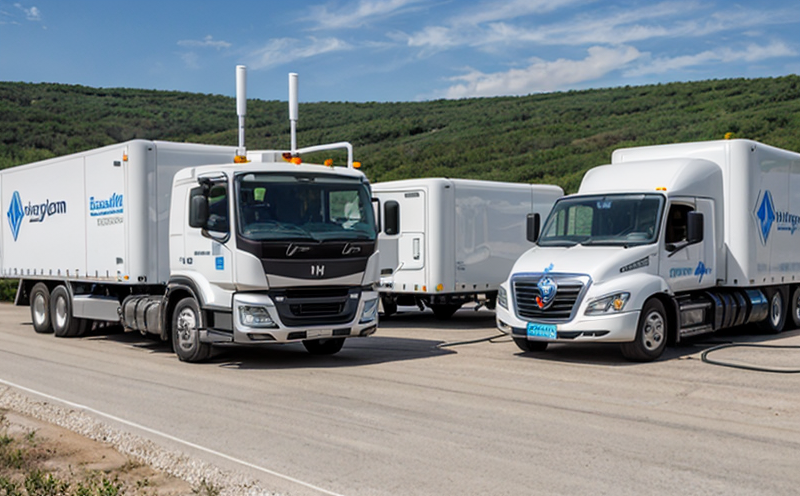SAE J2718 Hydrogen Compatibility Testing of Vehicle Materials
The SAE J2718 standard is a critical benchmark for ensuring the durability and integrity of materials used in hydrogen fuel cell vehicles. This test evaluates how different vehicle materials react to pressurized gaseous hydrogen at elevated temperatures, simulating real-world operating conditions. Understanding material compatibility with hydrogen is essential because hydrogen can cause embrittlement, cracking, or other degradation issues if not properly tested.
The SAE J2718 protocol involves placing a representative sample of the material in a pressurized chamber containing hydrogen gas at 350 psi and temperatures up to 140°F (60°C). The specimen is subjected to these conditions for a minimum of 1,000 hours. During this time, the integrity and structural integrity of the materials are monitored using non-destructive testing techniques like ultrasonic inspection or radiography.
This type of testing is particularly important in the renewable energy sector, where hydrogen fuel cells are gaining prominence as a clean alternative to fossil fuels. Ensuring that critical components such as seals, connectors, and structural parts withstand the harsh environment of gaseous hydrogen is crucial for the long-term reliability of vehicles powered by these technologies.
The SAE J2718 standard also plays an important role in the broader automotive industry, helping manufacturers to identify materials that can be used with confidence in fuel cell systems. By adhering to this test protocol, companies can ensure compliance with international standards and regulations related to hydrogen safety.
| Test Parameter | Description |
|---|---|
| Hydrogen Pressure | 350 psi (24.1 bar) |
| Temperature | 140°F (60°C) |
| Duration | Minimum 1,000 hours |
The results of the SAE J2718 test are reported in terms of material integrity and any observed changes or defects. These reports can be used by manufacturers to make informed decisions about material selection and design improvements.
Understanding hydrogen compatibility is not just important for automotive applications but also extends to other sectors such as aerospace, where lightweight materials that can withstand extreme environments are critical. The insights gained from SAE J2718 testing can help engineers develop more robust and reliable components for a wide range of industries.
Benefits
- Identify materials with high resistance to hydrogen embrittlement
- Avoid premature failure of critical components in fuel cell systems
- Ensure compliance with international standards and regulations
- Promote the development of safer, more efficient hydrogen fuel cell vehicles
- Enable manufacturers to make informed decisions about material selection
- Enhance the overall reliability and longevity of hydrogen-powered vehicles
Industry Applications
| Application | Description |
|---|---|
| Automotive Fuel Cells | Evaluating the durability and integrity of components used in hydrogen fuel cell vehicles. |
| Aerospace Components | Ensuring materials can withstand the harsh environments encountered during space missions. |
| Renewable Energy Systems | Testing structural parts for wind turbines and solar panels that may be exposed to hydrogen-based energy storage systems. |
The SAE J2718 test is particularly relevant in the renewable energy sector, where hydrogen fuel cells are being increasingly used as a clean source of power. By ensuring materials can withstand the harsh conditions of gaseous hydrogen, this testing helps to promote the development of safer and more efficient hydrogen-powered vehicles.
Quality and Reliability Assurance
The SAE J2718 test is a key component of quality assurance programs in the automotive industry. By ensuring that materials used in hydrogen fuel cell vehicles meet the stringent requirements outlined in this standard, manufacturers can have confidence that their products will perform reliably over extended periods.
Compliance with international standards like SAE J2718 is also essential for meeting regulatory requirements and gaining market acceptance. This ensures that companies are producing safe, high-quality products that meet industry best practices.
The results of the test provide valuable data that can be used to improve material selection and design processes. By identifying materials with superior hydrogen compatibility, manufacturers can enhance the overall performance and longevity of their vehicles.





